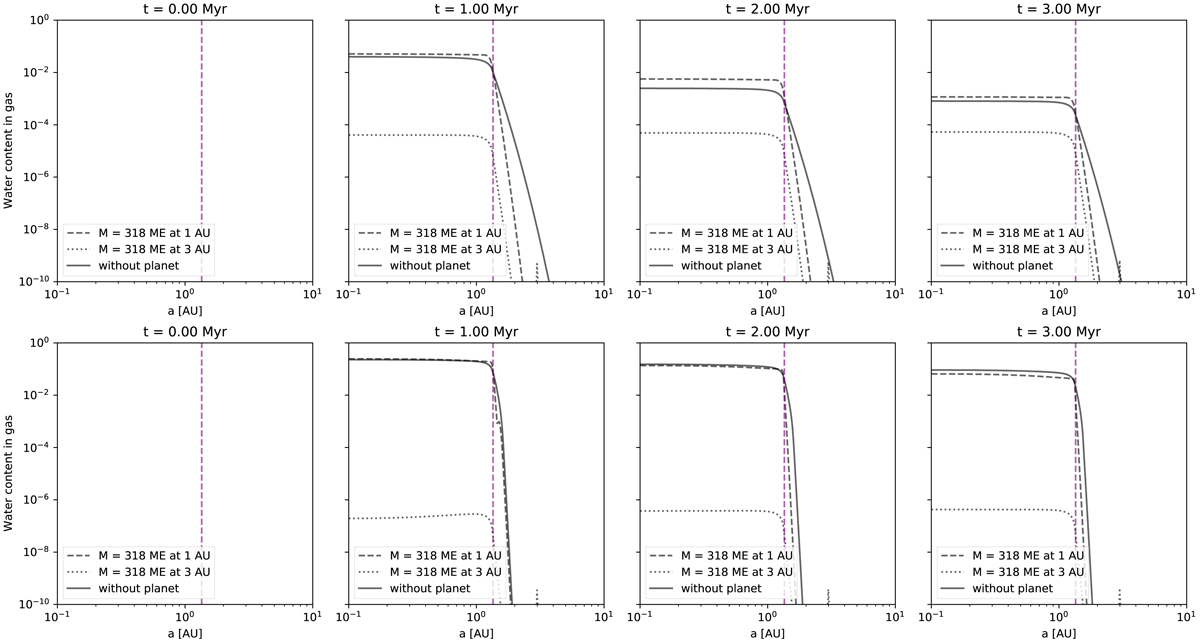Fig. B.1.

Water content in the gas phase for our three different scenarios (Fig. 1) as a function of time, where the giant planet is placed inside (dashed lines, scenario A) or outside (dotted lines, scenario B) the water ice line or where there is no giant planet (solid line, scenario C). The panels in the top row show a disk evolution with α = 0.001, while the bottom row shows a disk evolution with α = 10−4. The 1 Jupiter mass planet is placed in the disk at the beginning of the simulation. The vertical line shows the position of the water ice line, where some water vapor can also exist outside the ice line due to the outward diffusion of water vapor and not immediate re-condensation. It is clear that a planet positioned outside the water ice line is efficient in blocking pebbles, resulting in a low water fraction of the gas phase in the inner disk. The pebble flux diminishes over time, reducing the water vapor in the inner disk for all cases.
Current usage metrics show cumulative count of Article Views (full-text article views including HTML views, PDF and ePub downloads, according to the available data) and Abstracts Views on Vision4Press platform.
Data correspond to usage on the plateform after 2015. The current usage metrics is available 48-96 hours after online publication and is updated daily on week days.
Initial download of the metrics may take a while.


